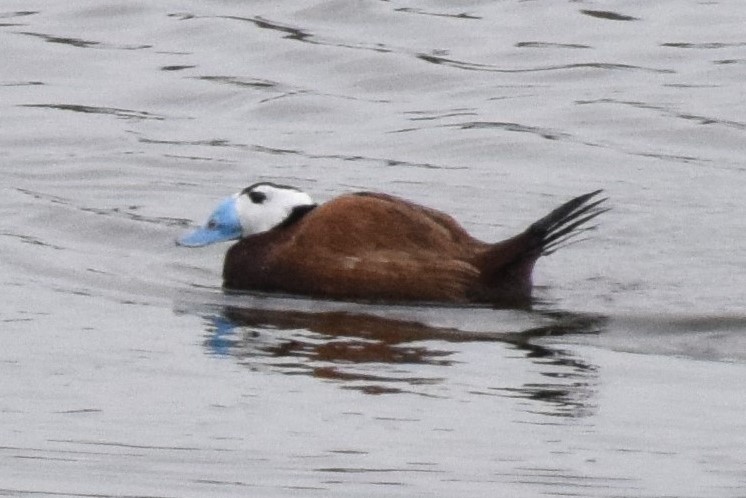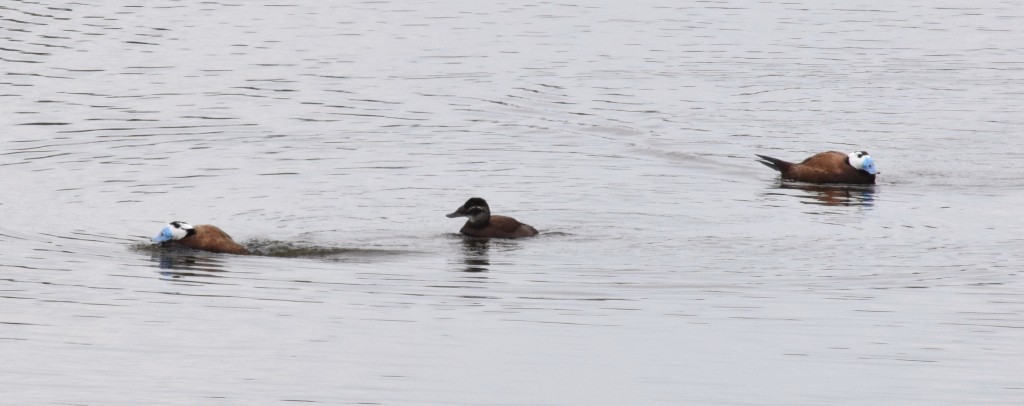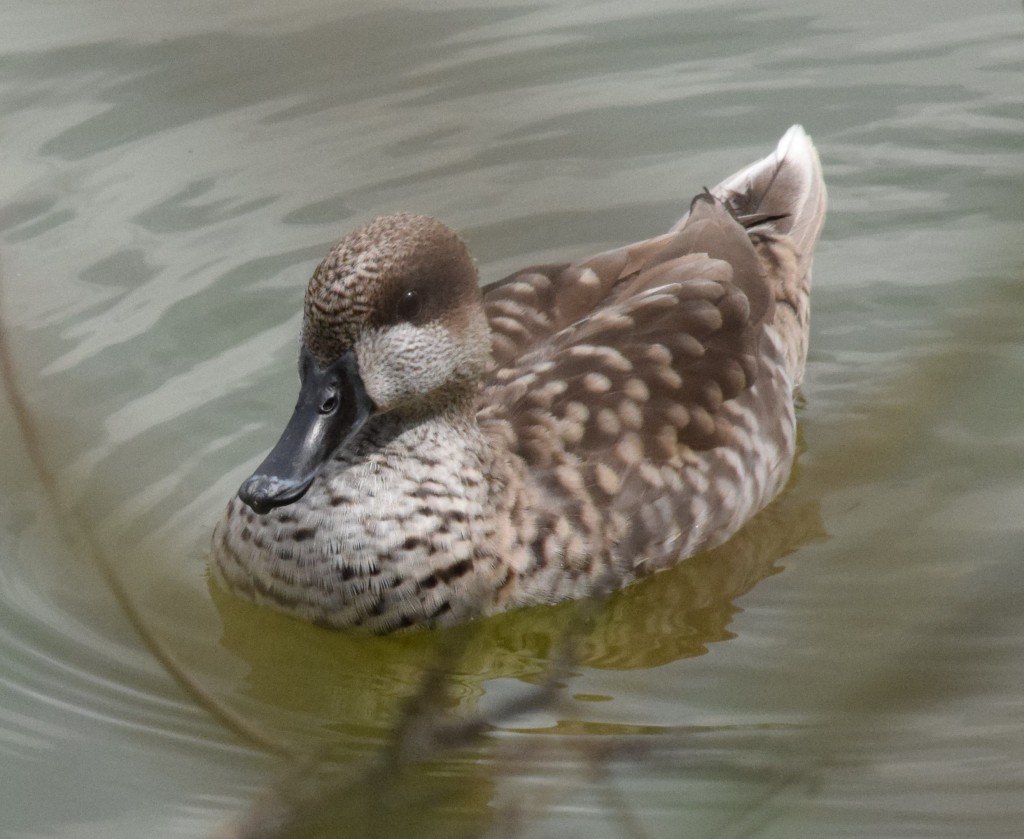The reserve of this post is one of the best locations in Spain for observing the endangered (BirdLife International 2004) White-headed Duck. I had recorded just three of these previously, two females in Turkey (July 2019) and a lone drake, briefly elsewhere in Spain (Sep 2022). For this first foreign trip of 2024, gaining a better experience of the strange looking Stifftail was thus the top birding priority.
There are three lagoons, all overlooked by viewing screens at this major wetland that lies just south of the city of Málaga. The best for birding, especially in passage seasons is Laguna Grande, at which on the morning of 21st I was told several of my quest were showing on the smaller Laguna Escondida a little to the north. When I got there a female was positioned fairly close to the screen, then I picked out three drake White-headed Duck in bright light at the far end of the lagoon. These moved gradually down towards the female and all became attentive upon her, though on receiving no encouragement drifted away again. I had thus connected at just the right time for the picture opportunity that follows. A day later on 22nd I counted seven drakes at the far end of the same lagoon.

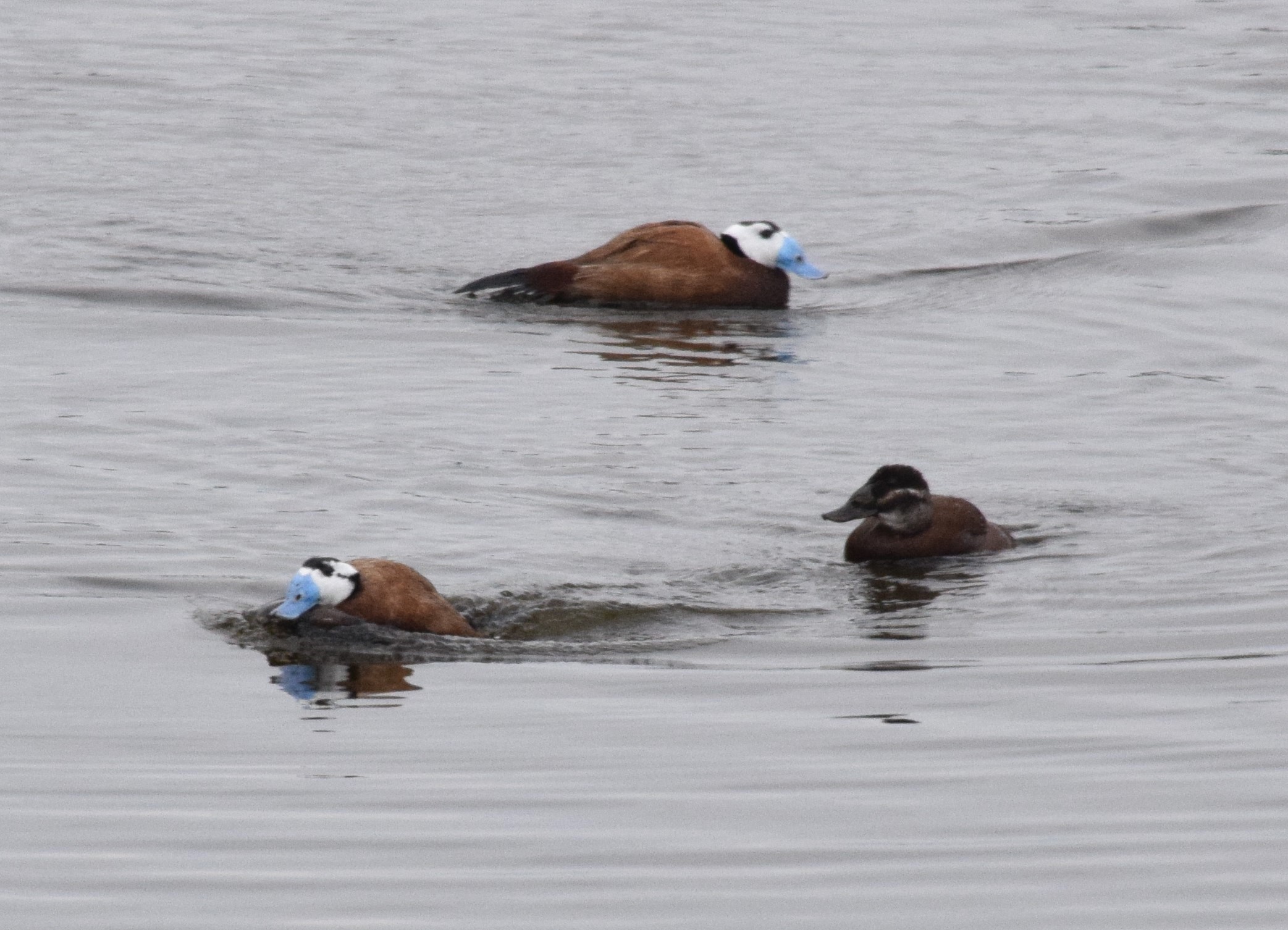
WHD has a fragmented distribution, with small, resident clusters in Spain, Algeria and Tunisia; and a larger, mainly migratory population in the eastern Mediterranean and Asia. By the 1970s, the Spanish contingent was close to extinction due to habitat destruction and degradation, and particularly hunting. In1977 just 22 individuals remained at a single site in Córdoba province. Then from 1979, crucially following the prohibition of hunting in WHD’s Andalucían strongholds, a highly successful conservation programme was initiated. Other significant measures included removal of introduced fish, control of pollution and sedimentation, and regeneration of fringing vegetation.
Hence WHD’s presence began to recover, and the species gradually expanded into the adjoining Andalucían provinces of Sevilla, Cádiz and Huelva. By 1988, numbers exceeded 400 birds, and breeding spread further into the provinces of Almería and Toledo. Then with effective protection from illegal hunting the chief threat to WHD’s long-term survival was deemed to be hybridization with introduced north American Ruddy Duck.
It was the British feral Ruddy Duck population’s predilection for steaming down here on lads’ weekends, to convert the newly available White-headed females after their own fashion, that prompted the highly controversial culling of the former nationally. To put things more accurately, Ruddy Duck began to appear in Spain and hybridize with the closely related native Stifftail in the early 1990s. At that time the British population, descended from birds first introduced in the 1940s, was expanding rapidly to peak at around 6000 in the early noughties.
EU research supported by the UK and Dutch governments deemed it necessary to eradicate the alien to ensure WHD’s survival as a distinct species in Europe (see here). In Great Britain, where most of the former occurred, that process was 95% completed by 2010. France followed suit and very few Ruddy Duck now remain in Belgium and Holland too. On 1 January 2015 EU Invasive Alien Species (IAS) regulation 1143/214 came into force whereby Ruddy Duck cannot be imported, kept, bred, transported, sold or exchanged, allowed to reproduce, or released into the environment in Europe.
This remains a very emotive issue amongst British birders. I myself am not a great IAS advocate and prefer not to judge. Spanish White-headed Duck numbers have continued to grow to around 2500. In its home range of north America Ruddy Duck maintains a stable population of around half a million birds, compared with 10,000 White-headed worldwide.
From Laguna Escondida I moved on to the third lagoon where I was initially excited to self-find two Marbled Duck (pictured above). This second item of conservation concern had until recently been cited as Spain’s rarest duck. It was once abundant in Mediterranean coastal wetlands, and especially in Doñana where I first failed to find it in 2012. But by 2020 Spain had become the only remaining refuge in Europe, with just 74 breeding pairs and falling. Habitat loss and degradation were once more the greatest threats as wetlands suffered the impacts of drainage for agriculture, pollution, proliferation of artificial barriers and other man-made threats. Re-introduction schemes at wetlands such as GRMNP are now reversing the decline.
On attempting to get closer I stumbled upon what was clearly one such project, administered by Life Cerceta Pardilla (see here). I then noticed a way down to a hiding place at the water’s edge, large enough for just one person, where the following pictures were taken. I felt sure I should not really be there, but there was plenty of evidence that people do go when the park rangers’ backs are turned. The birds, if aware of my presence were completely unconcerned by it, swimming up and down repeatedly at close quarters without taking fright.
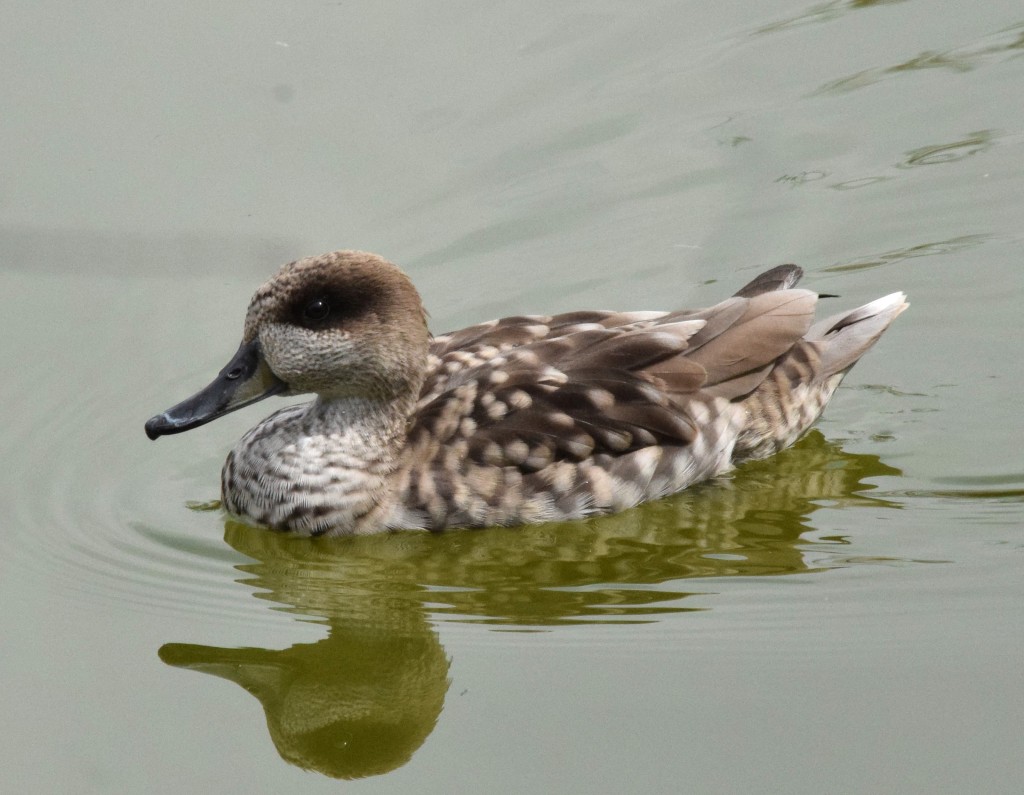
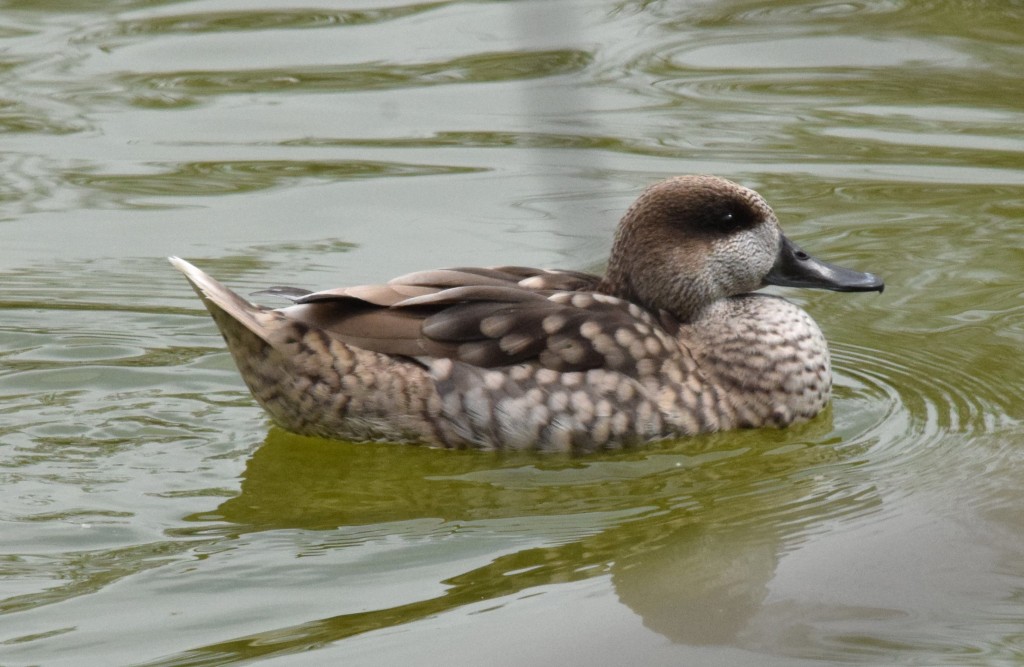
Marbled Duck (all images)

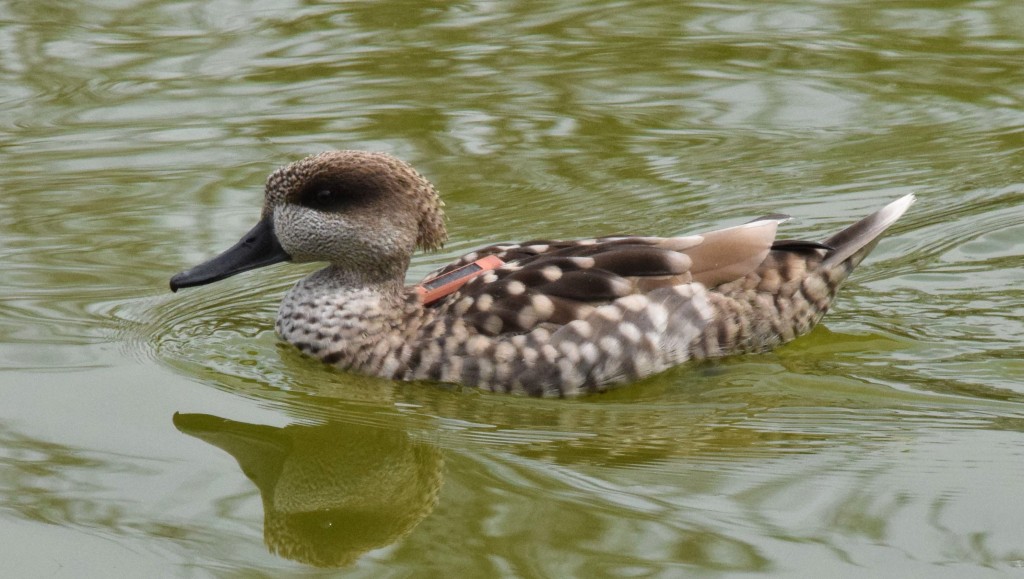
Checking with a patch worker back at Laguna Grande, I was told the spot I had just found was common knowledge amongst informed local birders. Then on reading things up I learned that 25 ducklings were released here in 2022. On today’s evidence the resultant local population is thriving. These birds are all fitted with GPS collars to track their movements, as the final picture shows. Re-introduced colonies are never as exciting as those such as WHD that have recovered by conservation measures alone.
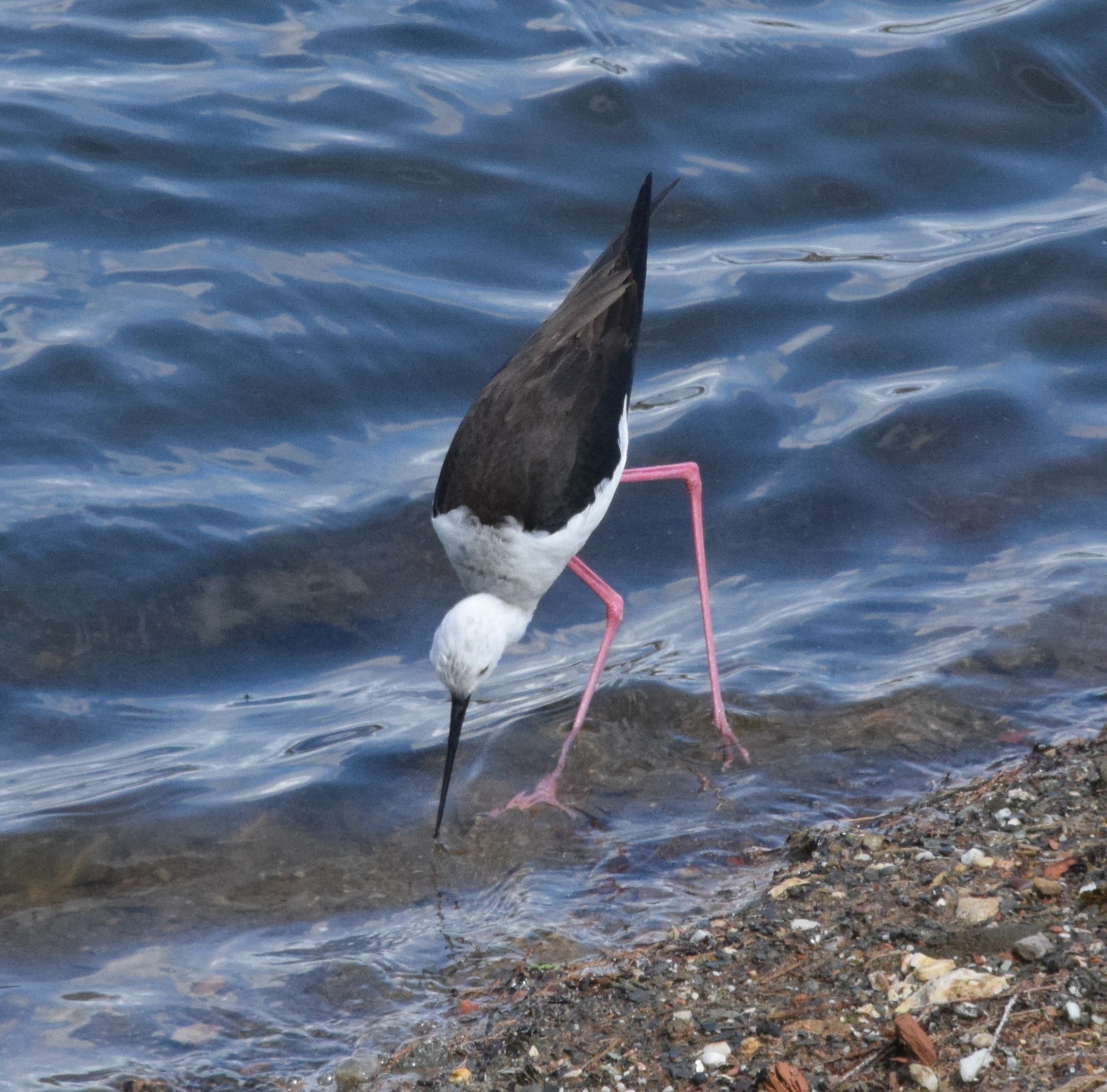
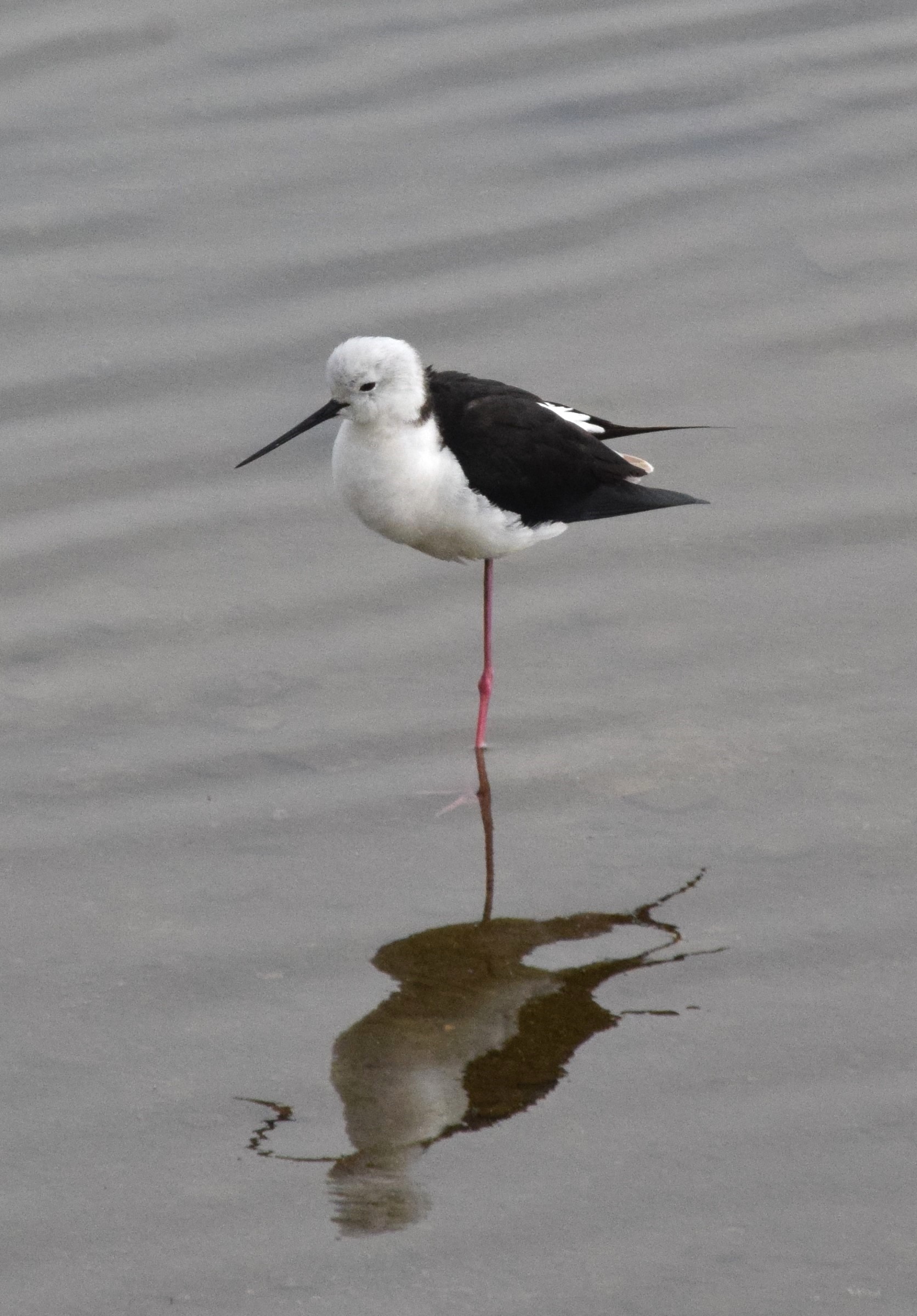
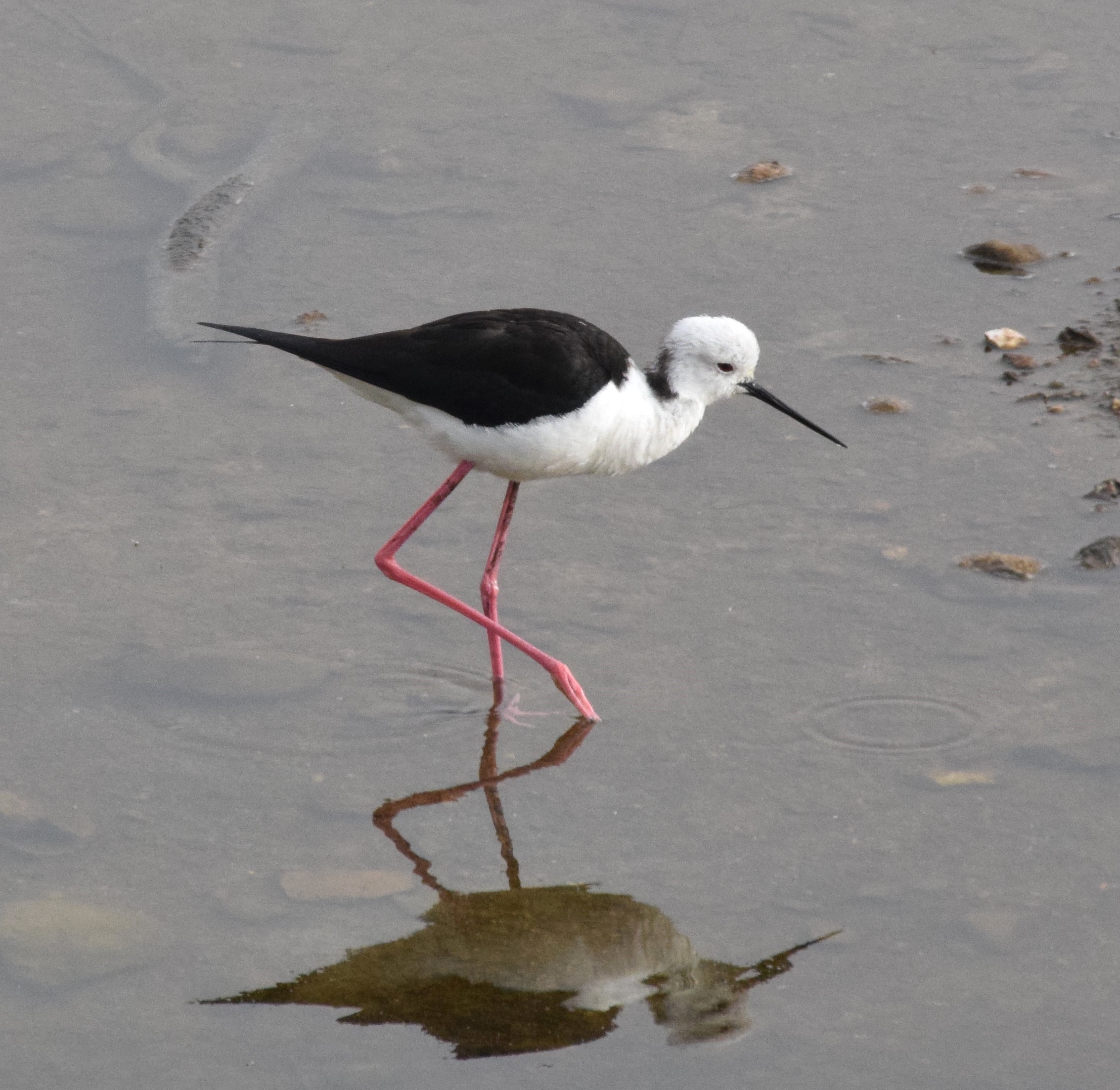


Black-winged Stilt
Where other birding was concerned, I can never recall having observed so many Black-winged Stilt at one site as here, and at the Laguna Grande screen I was able to add some reasonable pictures (above) to my collection. I have always found them difficult birds to capture well. On 26th I also took an opportunity to gain some studies of Cattle Egret on horseback (below).

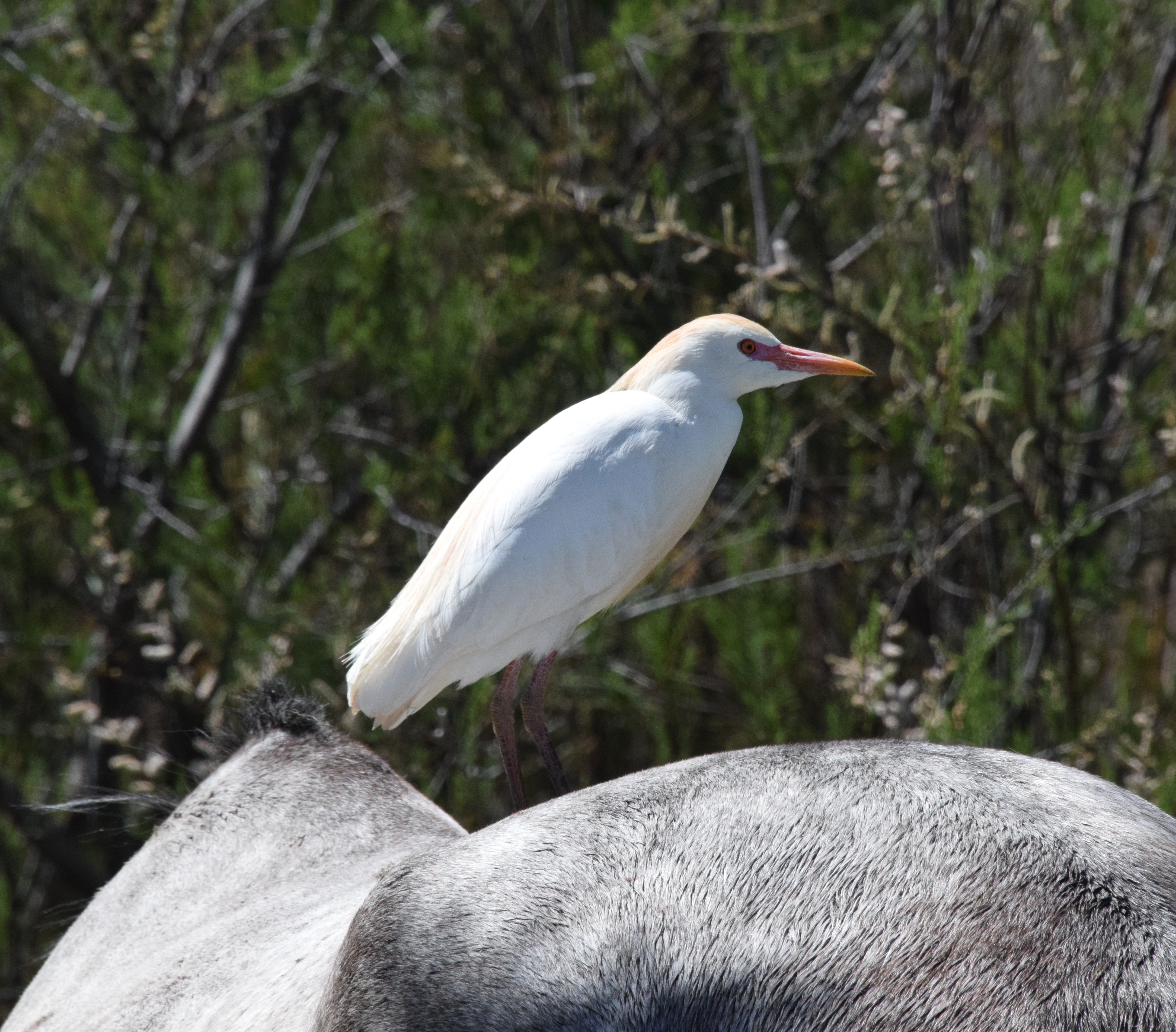
Cattle Egret
The only lifer gained was the ubiquitous Monk Parakeet. There are huge numbers of this South American IAS in Spain, especially in cities, and they are well established along the Costa del Sol. I actually rather liked them and find them more attractive than the Ring-necked Parakeets that now roost nightly in East Oxford. But I can imagine for people living amongst them, and especially if there might be one of their large communal nests outside an apartment window, their constant screeching must become irritating. Indeed the national colonisation is attributed to 1970s pet owners becoming sick of the sound of their imported Parrots and so releasing them into the outdoors. Cue an estimated current population of around 200,000.
Monk Parakeets (above) and Whiskered Tern (below)
(click to enlarge)
The bird list for this trip in so far as I paid attention (with notables in bold) was: Little Grebe, Cormorant, Little Egret, Cattle Egret, Grey Heron, Glossy Ibis, White Stork, Spoonbill, Greater Flamingo, Mallard, Garganey, Shoveler, Marbled Duck, Shelduck, Pochard, White-headed Duck, Osprey, Kestrel, Moorhen, Common Coot, Ringed Plover, Kentish Plover, Dunlin, Sanderling, Common Sandpiper, Green Sandpiper, Greenshank, Redshank, Avocet, Black-winged Stilt, Collared Pratincole, Yellow-legged Gull, Mediterranean Gull, Slender-billed Gull, Black-headed Gull, Whiskered Tern, Sandwich Tern, Feral Pigeon, Collared Dove, Monk Parakeet*, Woodlark, Swallow, Pied Wagtail, Spotless Starling, Cetti’s Warbler, Zitting Cisticola, Sardinian Warbler, Blackbird, Greenfinch, Goldfinch, Spanish Sparrow and hybrids.

Seven Collared Pratincole are hidden in this one (click to enlarge)
I was in no way attempting to build a bird list, these were just what I noticed without looking too hard. That is because my motivation for this trip arose out of wishing to experience one of the earliest butterflies of any Mediterranean season. Despite the name and my own liking for its region of southern France, my research suggested Provence Hairstreak is actually much more likely within the Iberian peninsula, and especially around Málaga.
They are also said to fly within the Guadalhorce Park, but things were not to be and so I have concluded converting them must be far more difficult than I had imagined. I would never normally have gone to Spain in March to do butterflies, but that is when this must-see lifer flies. There was an untold quantity of habitat in which they might be concealed, and on the three days out of six that produced partial butterfly-friendly weather I just could not locate any. Others of any kind were very few and far between.
The second reason for the three day gap in this post’s title is that on Saturday morning (23rd) I was struck down by a viral condition. The “two bob bits” Spanish style is no fun at all and I would not wish to meet El Montezuma again any time soon. So this otherwise not proper trip was saved by the quite reasonable Mediterranean birding recounted above, which had always been the contingency plan.

